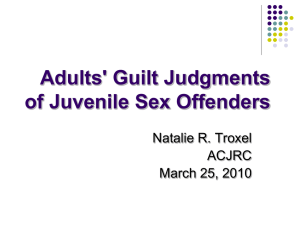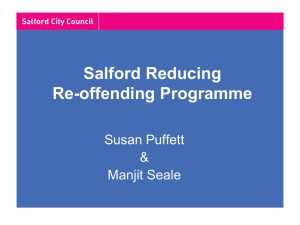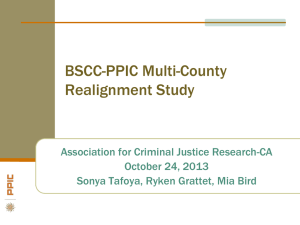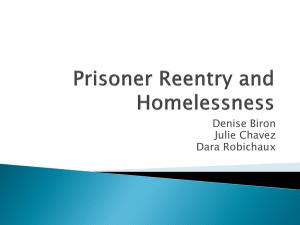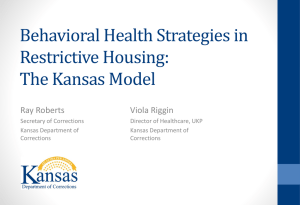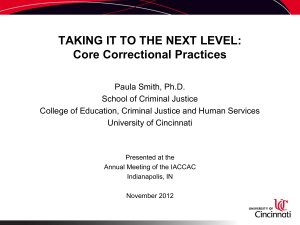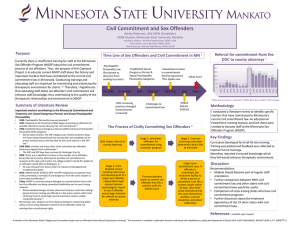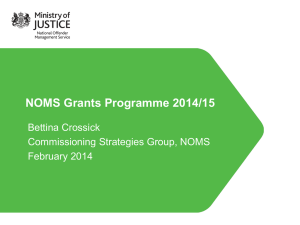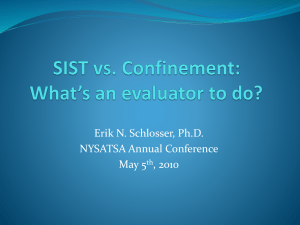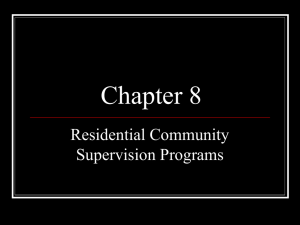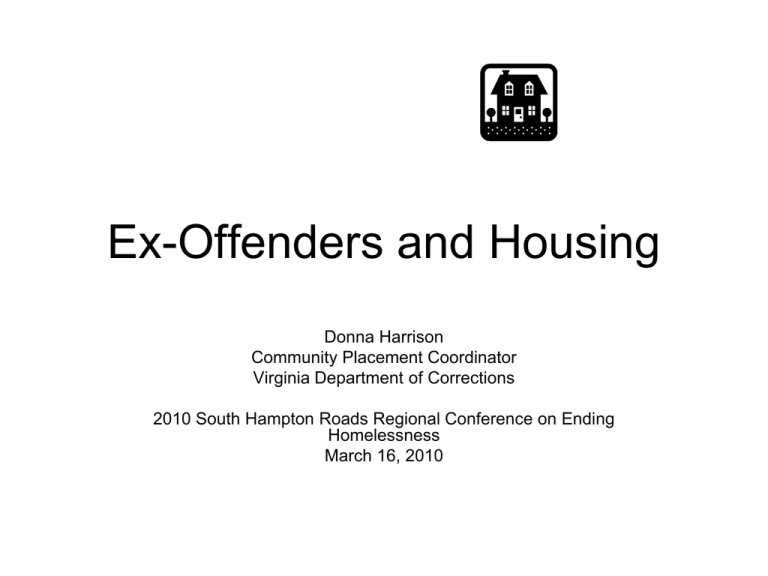
Ex-Offenders and Housing
Donna Harrison
Community Placement Coordinator
Virginia Department of Corrections
2010 South Hampton Roads Regional Conference on Ending
Homelessness
March 16, 2010
Community Release Unit
*Types of Releases
*More than 14,000 offenders were released
last year (2009).
*Growing number of GTRD/no parole law
cases being released
*Increase in number of homeless offenders
being released
*Increased need for specialized caseloads
Who are the homeless exoffenders?
Females/males
Young adults/elderly
Healthy/physically disabled
Substance Abusers
Mentally ill
Developmentally Disabled
Non-violent/violent
Sex offenders
Why are ex-offenders homeless?
No family support
Financial burden for family
Lack of housing for ex-offenders directly
from incarceration
Lack of alternative housing for violent/sex
offenders
Why are ex-offenders homeless?
Limited financial resources to help pay for
cost of housing
Offenders do not qualify for many housing
assistance programs or low income
housing
Limited housing resources for medically
and/or mentally disabled offenders
Additional Barriers for medically
and/or mentally disabled offenders
Decrease in assisted living facilities
Shrinking number of Medicaid/AG beds in
assisted living facilities
Nursing homes moving towards rehab
care from hospital to home; lack of long
term beds or long waiting lists
Criminal history
Community Placement
Coordinators
Our goal:
To assist institutional and community
corrections staff with transition planning for
homeless medically and/or mentally
disabled offenders. Our primary focus is
addressing the unmet needs of disabled
offenders who qualify for ALF or nursing
home placement.
Community Placement
Coordinators
Ensure identification documents have been requested
Ensure durable medical equipment is available at release
and special transportation is arranged
Monitor and provide technical assistance for pre-release
benefit application process (SSI & Medicaid)
Make arrangements for screenings (UAI) to be conducted to
determine the level of care needed for ALF or NH placement
Work with medical and mental health staff, and counselors at
the DOC facility to ensure medical/mental health information
is relayed, follow-up appointments are made, and release
medications provided
Secure placement of disabled offenders into ALF or nursing
homes
What is DOC doing?
DOC Reentry Planning policy
Institutional Counselor-primary coordinator for
reentry planning; other transitional staff assist with
planning
Release planning begins at reception
Pre-release benefit application process
Identity and employment documents process
Medical and mental health release preparation
What is DOC doing?
Education/vocational training
Treatment programs
Special transition housing units
Transition planning programs
Developing programs that focus on reintegrating
families
What is DOC doing?
► Separated
units in DOC facilities based on
special needs populations
► Agreements with other state agencies to
apply for identity documents and state and
federal benefits pre-release
► Jail re-entry programs
► Specialized caseloads in CRU
► Developing relationships with ALF’s & NH’s
for future referrals and collaboration
Community Collaboration
*Shelter Plus program
*Partnering with DSS, CSB, shelters,
and private mental health providers
*Private housing providers
partnerships with Probation & Parole
Districts
With supportive housing in place…..
• Communities are safer
• Decrease in recidivism
• Better coordination of medical and/or
mental health care
• Decrease in use of emergency serviceshospital/ER visits
Successes/Positives
• Serve as mentors or leaders in re-entry
and transitional housing programs, and
substance abuse treatment programs
• Network with employers
• Utilize job skills
• Apply education
Give back to the community by being
successful, active citizens and
maintaining a healthy lifestyle



